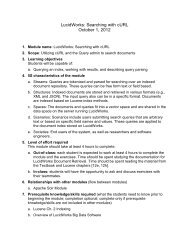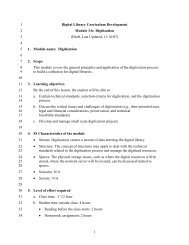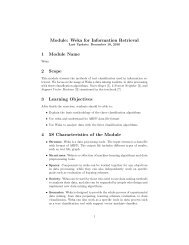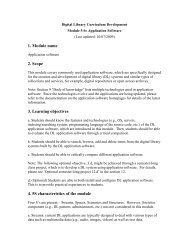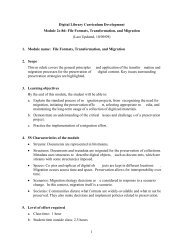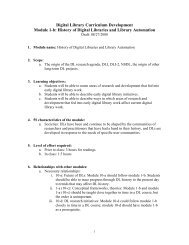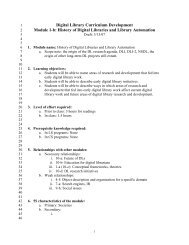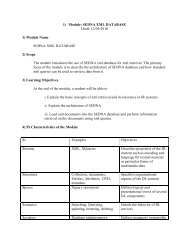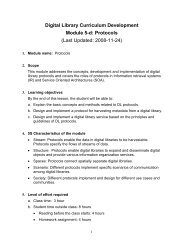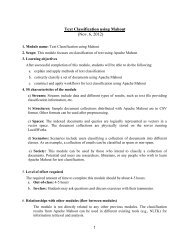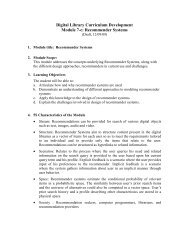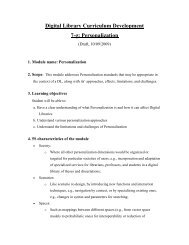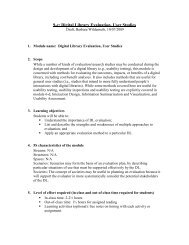Template for DL Instructional Modules - Digital Library Curriculum ...
Template for DL Instructional Modules - Digital Library Curriculum ...
Template for DL Instructional Modules - Digital Library Curriculum ...
Create successful ePaper yourself
Turn your PDF publications into a flip-book with our unique Google optimized e-Paper software.
6-a: In<strong>for</strong>mation Needs, RelevancePage 5Assumptions underlying this frameworkLibraries should be communication centers, rather than passivewarehousesA particular inquiry “is merely a micro-event in a shifting non-linearadaptive mechanism”Lessons learned from Taylor’s workThe inquirer has already gone through several stages be<strong>for</strong>e approachingthe librarian or <strong>DL</strong>It is likely that the inquirer will have difficulty expressing a query (i.e.,expressing a compromised need) in a <strong>for</strong>m that will result in successfulretrieval (in agreement with Belkin’s view)Relevance judgments and their relation to in<strong>for</strong>mation needsThe in<strong>for</strong>mation needs experienced at the beginning of the process, along with thecharacteristics of the user, are reflected in the relevance judgments made nearthe end of the processMaking relevance judgments about retrieved documents is based onwhether they satisfy the in<strong>for</strong>mation needVarious types of relevance (Sarcevic, 2006; Borlund, 2003)System/algorithmic relevanceTopical/subject relevanceThe one most often though ofCognitive relevance or pertinenceSituational relevance or utilityThe subjective nature of relevance judgments make them difficult toincorporate realistically into IR experiments, but most definitions ofrelevance judgments do consider them to be subjective and/or specificto the user’s situationWhile topicality is a primary consideration as people make relevance judgments,they also take into account other aspects of the document and its relation tothe situation (Yuan et al., 2002)Novelty: uniqueness of the source; the user’s familiarity with the source(negative)Currency: whether the source is up to dateQuality of the in<strong>for</strong>mation the source providesThe presentation and comprehensiveness of the in<strong>for</strong>mationOther aspects of the source, e.g., that the source is well known in the fieldIn<strong>for</strong>mation aspects of the source, e.g., that it describes treatments ortechniques or provides examplesAppeal: whether the source is interesting or enjoyable



